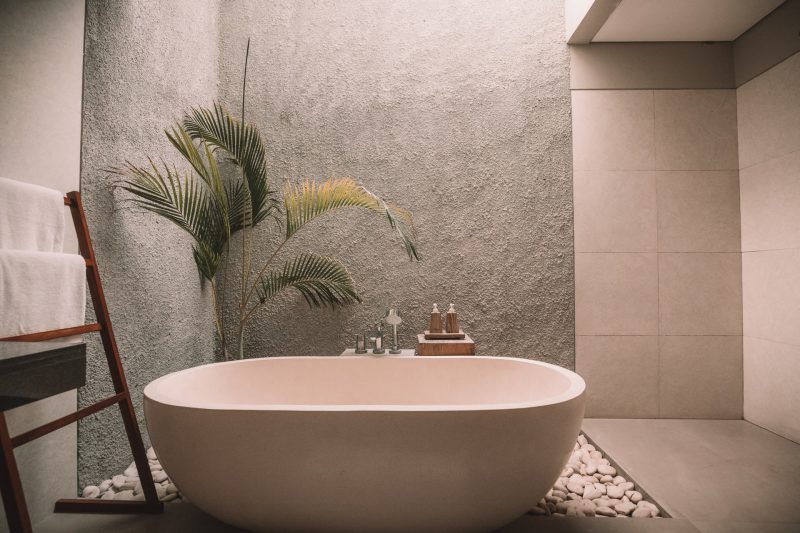When the weather changes and there is a distinct nip in the air, we know winter is just around the corner. The first frost could happen any day. If you are a gardener, you probably have mixed emotions. On the one hand, you are ready for a break, but on the other, you don’t want your supply of fresh vegetables to end.

Don’t put your garden supplies away just yet. There are several ways to extend the season and produce fresh vegetables virtually year-round. With a little planning, you can grow vegetables every month of the year. Here are six ideas to make that happen, including:
1. Protect What Is Already Growing — If you have some cold-weather tolerant crops in your fall garden, extend them into winter with a little protection. Kale can tolerate a lot of frost unharmed, and Brussels sprouts become sweeter after a frost. Both plants are tall, so use a tomato cage to protect them.
Slip the cage over the plants and be sure it is well anchored into the soil so it will stay even in winter winds. This will not be a problem once the ground has frozen the cage in place. Use the cage as a frame to hold a clear plastic sheet or even a large plastic garbage bag over the cage. This will create a mini greenhouse that can extend the life of your plants for months.
2. Mulch Your Root Crops — Cover plants like carrots, beets and parsnips with one to two feet of straw or even dried leaves. Cover it all with an old sheet or tarp to keep the mulch in place during windy winter days. Be sure to anchor the edges so that you can easily open the tarp to harvest the vegetables in the winter.

Your root crops should last months into the winter with this protection, depending on your growing zone. You could be eating fresh carrots for Christmas.
3. Use Mini-Hoop Tunnels — These work much the same as the tomato cage greenhouse. Your hoop tunnels can be large enough to cover an entire raised bed or just a single row. Use them to protect the late planted cold-weather tolerant vegetables like spinach, arugula and endive. You can make your own hoops with PVC piping or curved metal pipes anchored into the ground on either side of the raised bed.
Cover the tunnel with greenhouse poly or regular row cover. If you live in an area where there is the potential for a lot of snow, make sure your frame can support the weight until you can remove the snow. Spinach can be planted in the late fall for a spring crop.
It won’t start growing until spring, but literally it will grow while there is still some snow left on the ground. If you plant spinach in a tunnel, you could be eating spinach salads at the time the unprotected seeds are just sprouting.
4. Use a Cold Frame — Cold frames are one of the best gardening aids to extend the season. They are easy to make as a DIY project with scrap wood and an old glass window or door. You can plant directly in the soil or place seeded pots into the cold frame.

They work like a mini greenhouse and can allow you to grow much earlier in the season. Because your plants are growing outdoors, they won’t need to be hardened off before you transplant them into their permanent home. If you are growing in the ground of your cold frame, just remove the glass lid when the danger of frost is over.
Cold frames are the perfect place to harden off vegetables that you started indoors and to transition greenhouse plants to the garden. Don’t forget to use your cold frame in the fall, too, when you plant salad greens.
Grow Fresh Vegetables Indoors During the Winter
Depending on what growing zone you live in, there may come a point where no amount of protection will be enough to grow outside. Don’t despair! With all the growing systems that are available today, a few additional gardening supplies will make it possible to grow vegetables indoors. If you can provide what your plants need to thrive, you can enjoy many different vegetables indoors. Here are two more tips for successfully growing indoors, including:
1. Use a Grow Light — The biggest hurdle to growing indoors is light. It is not possible to grow some vegetables even in a very sunny window. Many plants require more hours of light than the sun provides in the short days of winter. This is where grow lights are invaluable. They can be set for the number of hours that are optimal for what you are trying to grow.
Most lights are adjustable so the same light can be used for easily growing seeds indoors and adjusted as the plants grow taller. The cost of grow lights is much more reasonable and they last an incredibly long time. Grow lights can be long enough to supply light to a long shelf of plants or just spotlight one individual plant.

2. Keep Your Indoor Plants Warm and Well-Watered — Make sure to keep your plants away from cold drafts from windows or doors to the outside. Remember that the indoors is generally less humid so your plants will probably dry out faster than outdoors.
Be vigilant on watering and bottom watering your seedlings. When choosing what to grow indoors, of course, the first thing that comes to mind is salad greens. That is a great choice but don’t limit yourself. Try growing a pepper plant or tomato indoors. Choose a patio tomato that is developed to grow in a pot.
Tomatoes have large roots so give it plenty of room. Have fun with your winter garden. Did you know you can grow carrots indoors? Plant the half-sized carrots in a deep pot so they have plenty of room.
By following these easy tips, you can grow fresh vegetables throughout the long winter. Every bite of fresh vegetables will be that more exciting while you wait for spring to arrive.








